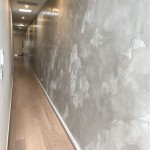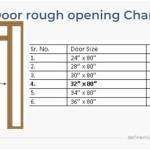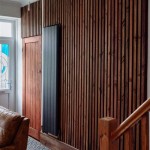Church Interior Design Ideas and Pictures: Creating Sacred Spaces
Church interior design plays a crucial role in fostering a sense of reverence, community, and spiritual connection. The aesthetics of a church space extend beyond mere decoration; they contribute to the overall worship experience, influencing mood, focus, and engagement. Thoughtful interior design can enhance the feeling of transcendence and create an environment that is both welcoming and conducive to prayer and reflection. This exploration will delve into various design ideas for church interiors, accompanied by illustrative examples, focusing on essential elements such as architectural style, color palettes, lighting, and furnishings.
The impact of visual elements on the congregation's experience should not be understated. The choice of materials, the arrangement of seating, and the integration of artistic details all contribute to the overall atmosphere. A well-designed church interior can serve as a powerful tool for reinforcing faith, promoting unity, and inspiring devotion. By carefully considering the various aspects of design, church leaders can create spaces that are not only aesthetically pleasing but also spiritually enriching.
Understanding Architectural Styles and Their Influence
The architectural style of a church building significantly shapes its interior design. The historical period and design philosophy reflected in the architecture dictate the layout, proportions, and inherent aesthetic qualities of the space. Recognizing and honoring the architectural style is essential for creating a cohesive and harmonious interior. Common architectural styles found in churches include Gothic, Romanesque, Byzantine, Colonial, and Modern.
Gothic architecture, characterized by soaring arches, pointed vaults, and stained-glass windows, lends itself to an interior design that emphasizes verticality and light. High ceilings and tall, narrow windows create a sense of upward movement, symbolic of spiritual ascension. Interior design elements often include elaborate carvings, intricate tracery, and rich, jewel-toned colors in stained glass, fostering an atmosphere of awe and reverence. Examples include the Notre Dame Cathedral in Paris and the Cologne Cathedral in Germany, although the modern design would incorporate less ornate detailing while still emphasizing verticality.
Romanesque architecture, distinguished by its rounded arches, barrel vaults, and thick walls, typically features a more grounded and solid presence. Interior design in Romanesque churches often incorporates simple, robust furnishings, muted colors, and less elaborate ornamentation. Stone is a prominent material, and the overall impression is one of strength and stability. The Basilica di Sant'Ambrogio in Milan provides a prime example.
Byzantine architecture, known for its central dome, intricate mosaics, and opulent decorations, emphasizes the divine glory and the heavenly realm. Interior design prioritizes the use of gold, vibrant colors, and elaborate iconography, creating an atmosphere of dazzling splendor. Hagia Sophia in Istanbul is a renowned example, showcasing the grandeur and artistic richness of Byzantine design. While a modern Byzantine inspired church may not utilize pure gold, the use of metallic accents and vibrant colors can still evoke a similar sense of awe.
Colonial architecture, prevalent in the Americas, often reflects a more restrained and practical approach. Interior design typically features simple, clean lines, natural materials, and a focus on functionality. White walls, wooden pews, and minimal ornamentation are characteristic of this style. These churches often reflect the community's values of simplicity and piety. Meetinghouses in New England serve as classic examples.
Modern church architecture embraces a wide range of styles, often incorporating contemporary materials, innovative structural designs, and flexible spaces. Interior design may prioritize adaptability, sustainability, and accessibility. Clean lines, open layouts, and natural light are common features. Modern churches might use glass extensively, incorporate energy-efficient materials, and create multi-purpose spaces that can be used for various activities beyond traditional worship services.
The Role of Color, Lighting, and Furnishings
Beyond architectural style, the selection of color palettes, lighting strategies, and furnishings plays a significant role in shaping the atmosphere of a church interior. Careful consideration of these elements can enhance the worshiper's experience and contribute to the overall sense of sacredness and community.
Color psychology suggests that different colors evoke different emotions and associations. In church interiors, color can be used to create a specific mood or emphasize certain aspects of the worship experience. For example, blue is often associated with peace, tranquility, and spirituality, making it a suitable choice for sanctuary walls or altar cloths. Green is linked to growth, renewal, and hope, and may be used in areas dedicated to education or community outreach. Red is often associated with passion, sacrifice, and the blood of Christ, and may be used during specific liturgical seasons or in areas associated with communion. White is typically associated with purity, innocence, and light, and it is a common choice for vestments and altar linens during Easter and other celebratory occasions. The appropriate use of color can be subtle, using color accents on neutral walls, or more pronounced, through stained glass or art installations.
Lighting is another crucial element in church interior design. Natural light, when available, can create a warm and inviting atmosphere, connecting the interior space with the outside world. Large windows, skylights, and clerestory windows can bring natural light into the sanctuary. Artificial lighting should be designed to complement natural light and provide adequate illumination for various activities. Different types of lighting can be used to create different effects. Ambient lighting provides general illumination, while task lighting focuses on specific areas, such as the pulpit or the choir. Accent lighting can highlight architectural features or artwork. Dimmers allow for adjusting light levels to create different moods during different parts of the service. LED lighting offers energy efficiency and long lifespan, making it a practical choice for many churches.
Furnishings are also essential for creating a functional and aesthetically pleasing church interior. Pews or chairs provide seating for the congregation. Altars, pulpits, lecterns, and communion tables are focal points in the sanctuary. Banners, tapestries, and artwork can add visual interest and reinforce the themes of worship. Considerations when selecting furnishings include comfort, durability, and style. Pews should be ergonomically designed to provide comfortable seating during long services. Chairs offer greater flexibility in terms of arrangement and can be easily moved to accommodate different events. The altar should be visually prominent and reflect the reverence due to the sacrament. The pulpit should be positioned to ensure that the speaker can be clearly seen and heard. The lectern should be at a comfortable height for reading. The size and style of the furnishings should be proportionate to the size and style of the church interior. The materials used for furnishings should be durable and easy to maintain.
Integrating Art, Symbolism, and Accessibility
The integration of art, symbolism, and accessibility features can further enhance the spiritual and physical environment of a church interior. These elements contribute to creating a space that is inclusive, meaningful, and inspiring for all members of the congregation.
Art plays a significant role in communicating faith and inspiring devotion. Stained-glass windows, sculptures, paintings, mosaics, and other forms of art can depict biblical scenes, portray saints, or express abstract spiritual concepts. Artwork should be carefully selected to complement the architectural style and overall design of the church interior. The placement of artwork should also be carefully considered to ensure that it is visually accessible and contributes to the overall atmosphere of the space. Commissioning local artists can provide a unique and personal touch to the church interior, reflecting the community's identity and values.
Symbolism is deeply embedded in church architecture and design. Crosses, crucifixes, candles, and other symbols are used to represent core beliefs and spiritual truths. Symbols can be incorporated into the interior design in various ways, from the overall shape of the building to the details of the furnishings. The use of symbolism can enhance the meaning and significance of the worship experience, helping worshippers to connect with their faith on a deeper level. The placement and interpretation of symbols should be carefully considered to ensure that they are understood and appreciated by all members of the congregation. Educational programs or displays can help to explain the meaning of different symbols and their significance in the Christian tradition.
Accessibility is a critical consideration in church interior design. Churches should be welcoming and accessible to all members of the community, regardless of their physical abilities. Ramps, elevators, and accessible restrooms should be provided to ensure that individuals with mobility impairments can easily navigate the building. Assistive listening devices can help those with hearing impairments to participate fully in services. Large-print hymnals and service bulletins can be provided for those with visual impairments. Seating should be arranged to accommodate wheelchairs and other mobility devices. Signage should be clear and easy to read. Creating an accessible church interior demonstrates a commitment to inclusivity and ensures that all members of the community can participate fully in the life of the church.
Ultimately, effective church interior design balances aesthetics with functionality, creating a space that fosters spiritual growth, community engagement, and a deep sense of reverence. Each element, from the grand architectural style to the subtle details of color and lighting, contributes to the overall atmosphere and experience of worship.

Church Sanctuary Ideas

Church 3d Rendering Interior Design For Churches

Church Decorating Services Liturgical Interior Design

Now This Is A Beautiful Church

Church Interior Design Specialists Consultants

Church Renovations Remodeling Pew Restoration

Traditional Church And Sanctuary Renovations

6 Fresh Elements In Church Lobby Interior Design Ion

Heavenly Church Sanctuary Renovation Barron Designs

230 Modern Church Interiors Ideas In 2025 Interior Auditorium Design
Related Posts








